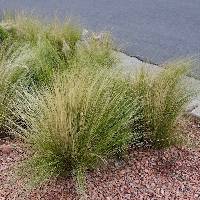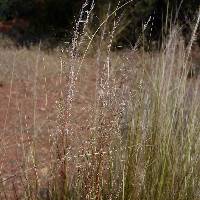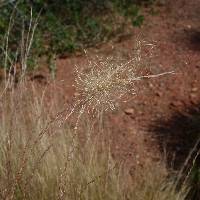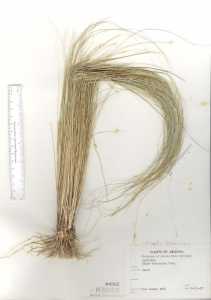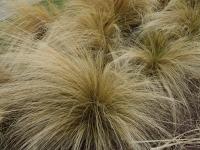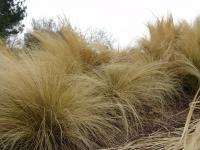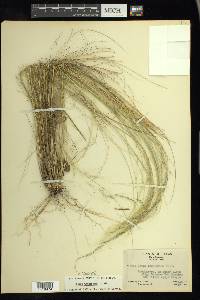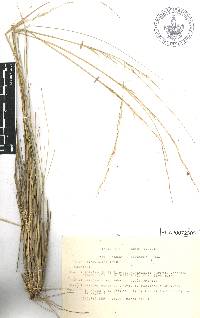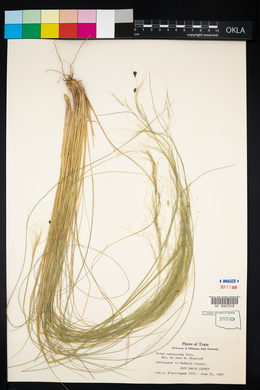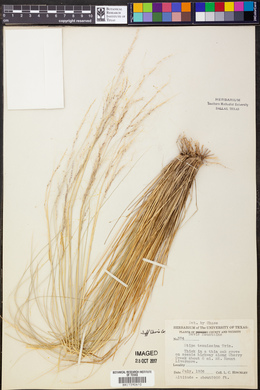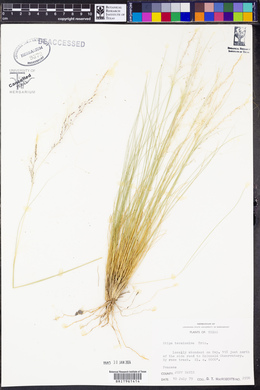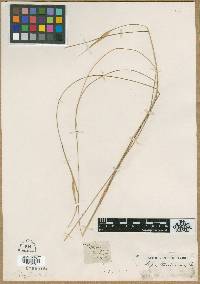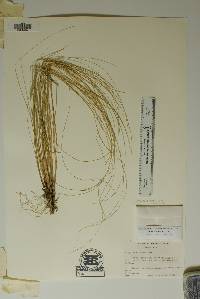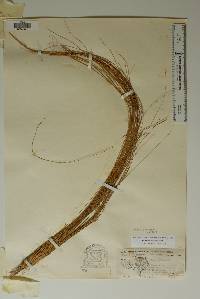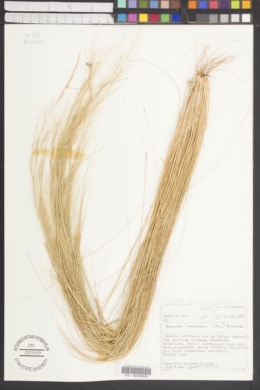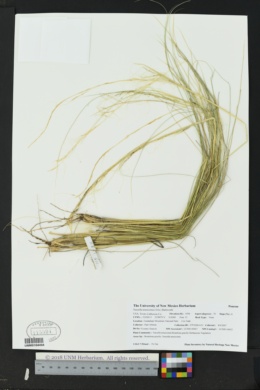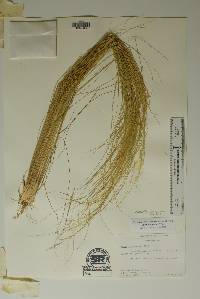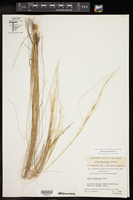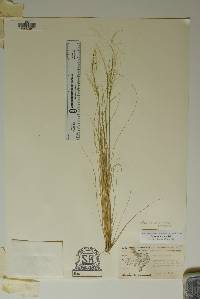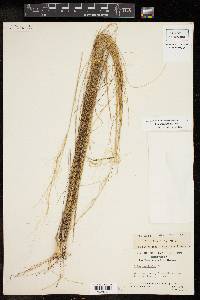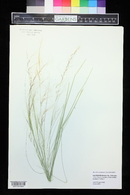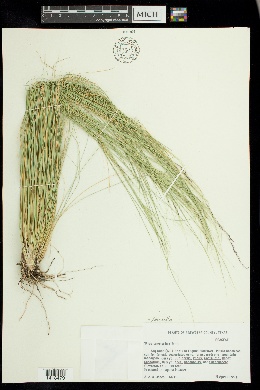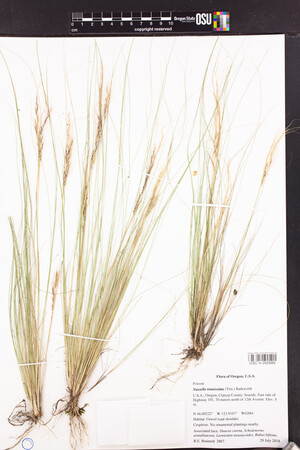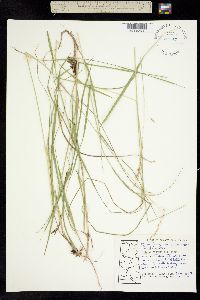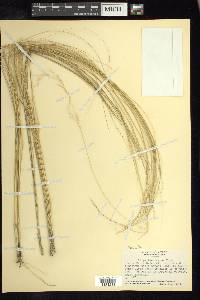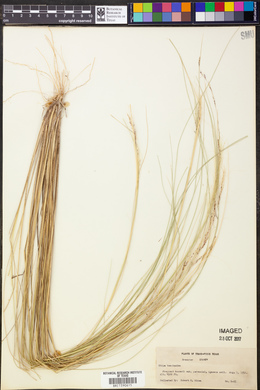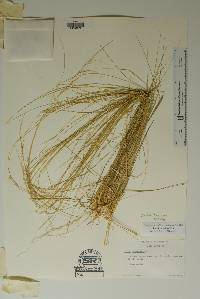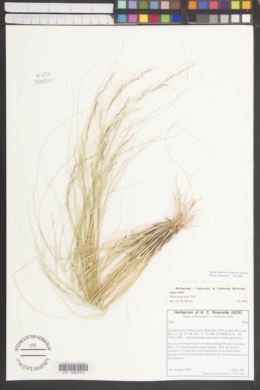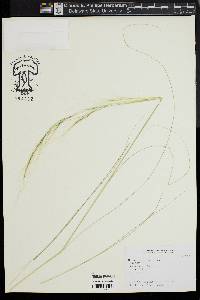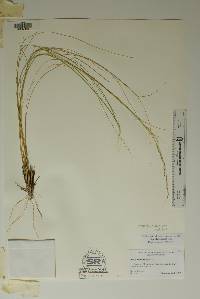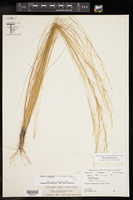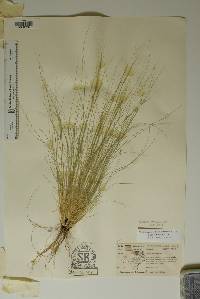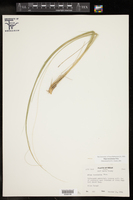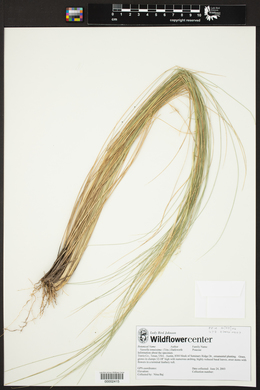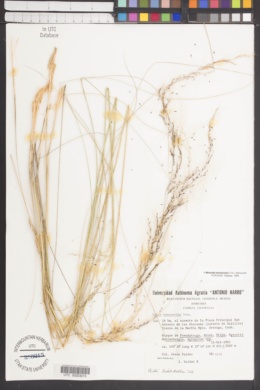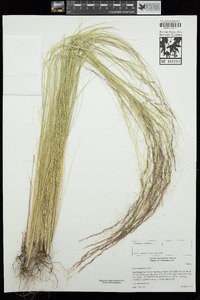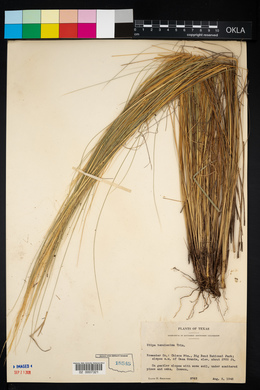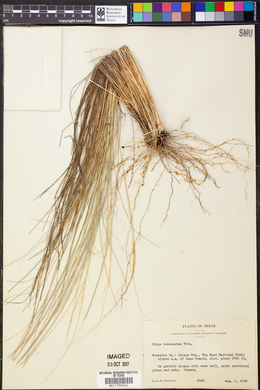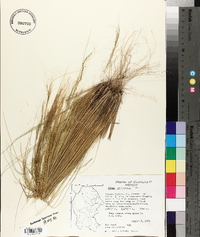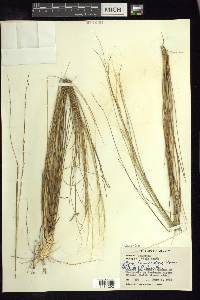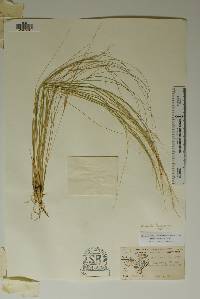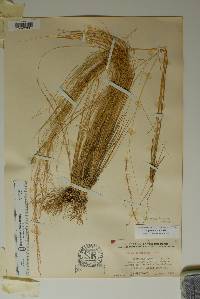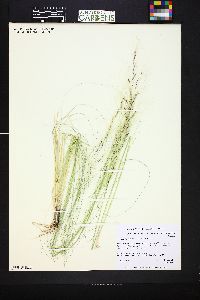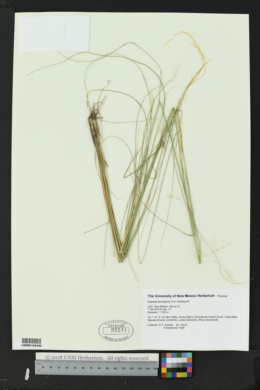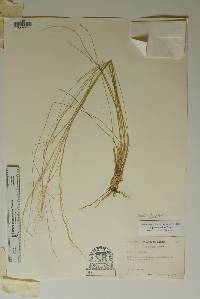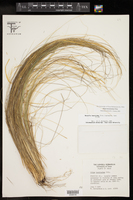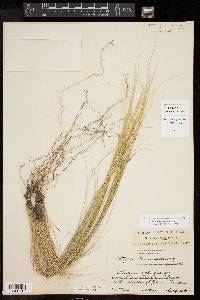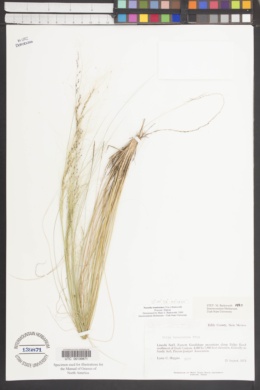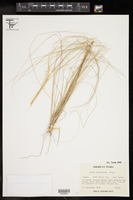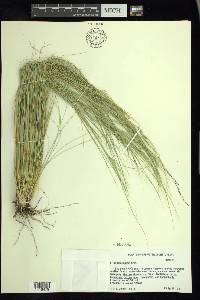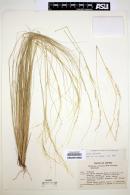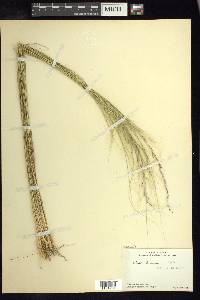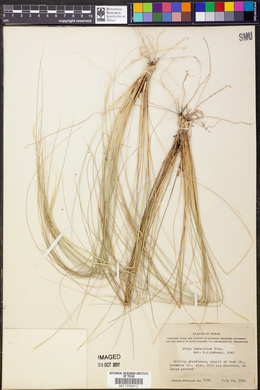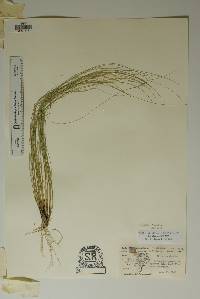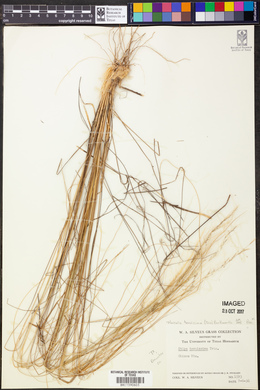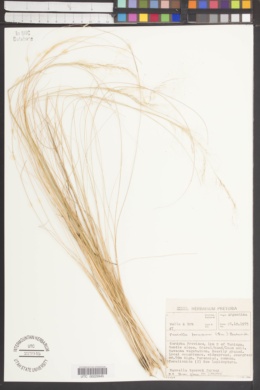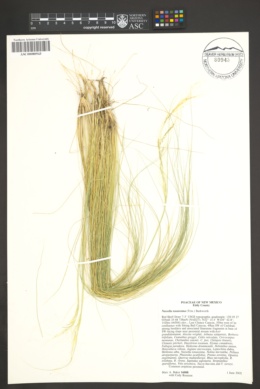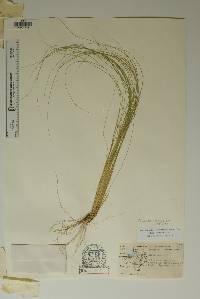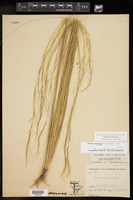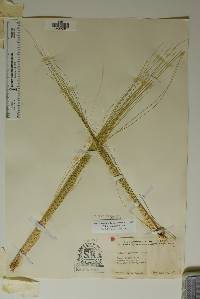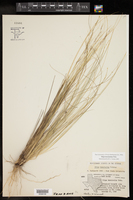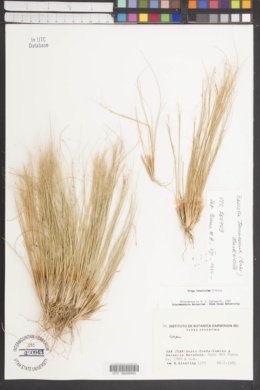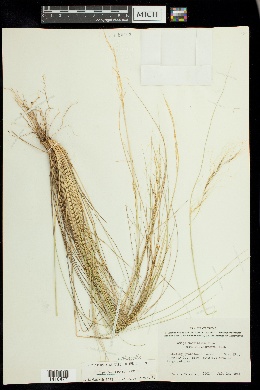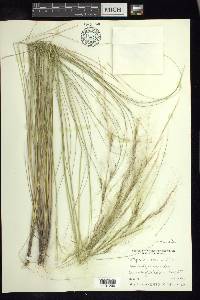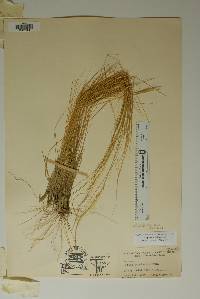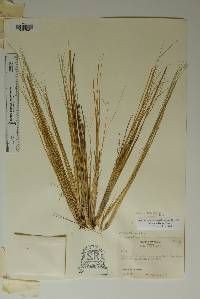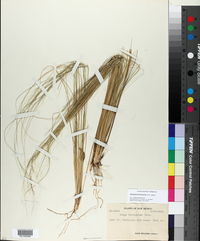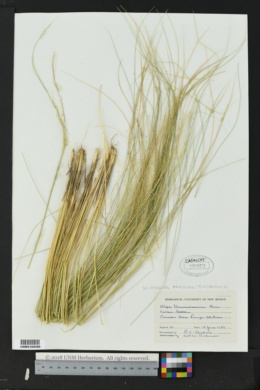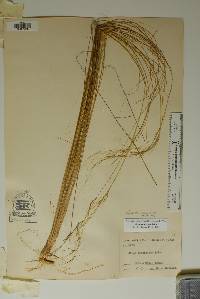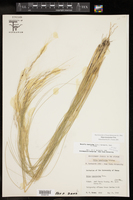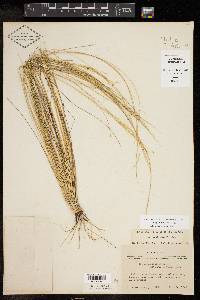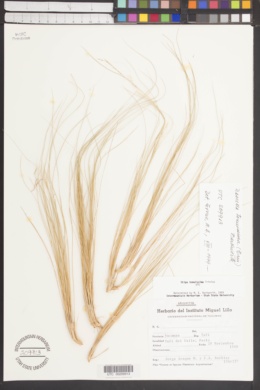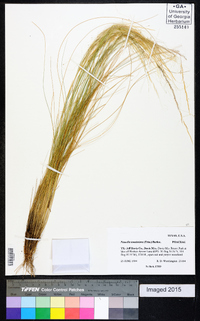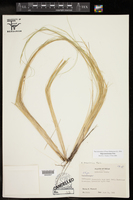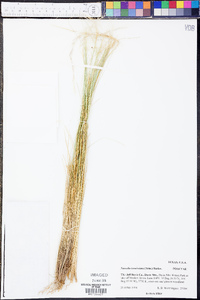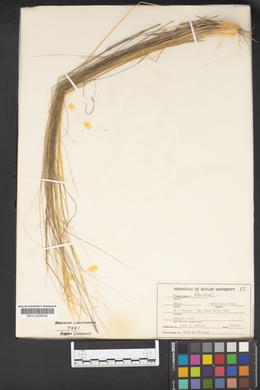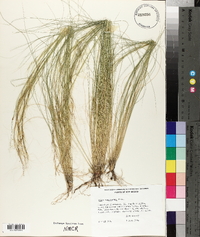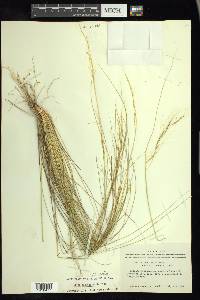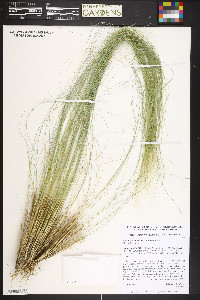Nassella tenuissima
|
|
|
|
Family: Poaceae
Fine-Stem Tussock Grass, more...tussockgrass, finestem stipa, finestem tussockgrass, Fineleaved Nassella
[Stipa cirrosa E. Fourn., moreStipa geniculata Phil., Stipa mendocina Phil., Stipa oreophila Speg., Stipa subulata E. Fourn., Stipa tenuissima Trin., Stipa tenuissima var. oreophila (Speg.) Speg., Stipa tenuissima var. planicola Speg., Stipa tenuissima var. tenuissima Trin.] |
Plants perennial; tightly ces-pitose, not rhizomatous. Culms 25-100 cm tall, 0.4-0.7(1.1) mm thick, usually erect, basal nodes sometimes geniculate, internodes mostly glabrous, pubescent just below the lower nodes; nodes 2-4, glabrous. Sheaths glabrous, even on the margins, sometimes scabridulous; collars glabrous, without tufts of hair at the sides; ligules 1-5 mm, glabrous, acute; blades 7-60 cm long, 0.2-1.5 mm wide, usually convolute, stiff, glabrous, scabridulous. Panicles 8-50 cm, loosely contracted, often partly enclosed at maturity; branches 2-8 cm, glabrous; pedicels 1-11 mm. Glumes subequal, 5-13 mm long, 0.5-1.2 mm wide, narrowly lanceolate, glabrous, aristate; florets (1.5)2.5-3 mm long, about 0.5 mm wide, widest at about midlength, somewhat laterally compressed; calluses 0.2-0.5 mm, blunt, strigose, hairs reaching to about 1/4-1/3 the length of the lemmas; lemmas finely tuberculate, rounded to the crown, midveins pubescent on the proximal 1/2; crowns 0.1-0.2 mm long, 0.2-0.25 mm wide, straight-sided, rims with hairs shorter than 0.5 mm; awns 45-100 mm, almost centric, cernuous throughout, twice-geniculate, usually both geniculations obscure; anthers 3, 1.2-1.5 mm. Caryopses about 2 mm, linear, dark brown. 2n = 40. Nassella tenuissima grows on rocky slopes, frequently in oak or pine associations but also in open, exposed grasslands. Its native range extends from the southwestern United States into northern Mexico. It is now also established in the San Francisco Bay area, having been introduced as a garden plant. It is an attractive species, available through some horticultural outlets, but it readily escapes from cultivation into nearby disturbed sites. Gould 1980, FNA 2007, Hitchcock 1950 Common Name: finestem needlegrass Duration: Perennial Nativity: Native Lifeform: Graminoid General: Perennial with stems in tight, large clumps, slender, stiffly erect, 25-100 cm tall, 0.4-0.7 mm thick, basal nodes sometimes geniculate, internodes pubescent just below lower nodes; 2-4 nodes. Vegetative: Glabrous sheaths, even on margins, collars glabrous, without tufts of hair at the sides, ligules 1-5 mm, glabrous acute, blades 7-60 cm long, 0.5-1.5 mm wide, narrow, filiform, tightly involute. Inflorescence: Delicate panicles 8-50 cm long, loosely contracted, partly enclosed at maturity; branches 2-8 cm, glabrous; pedicels 1-11 mm, glumes membranous, subequal 5-13 mm long, 0.5-1.5 mm wide, narrowly lanceolate, glabrous, aristate; florets 2.5-3 mm long, about 0.5 mm wide, widest in middle, somewhat laterally compressed; lemmas finely tuberculate, rounded to crown, midveins pubescent on the proximal half, awns 45-100 mm, delicate, flexuous, indistinctly twice geniculate, scaberulous. Ecology: Found on rocky slopes. Notes: Uncertainty as to the distribution of this species in Arizona. SEINET accounts for no collections in Arizona, save for a single 1937 collection. Distinguished by its very delicate, but very long twice geniculate awn. Worth collecting anywhere you find it to expand its known range. Ethnobotany: Unknown Etymology: Nassella is a diminutive of the Latin nassa, a basket with a narrow neck, a fish basket, while tenuissima means very slender. Synonyms: Stipa tenuissima Editor: SBuckley, 2010 |


